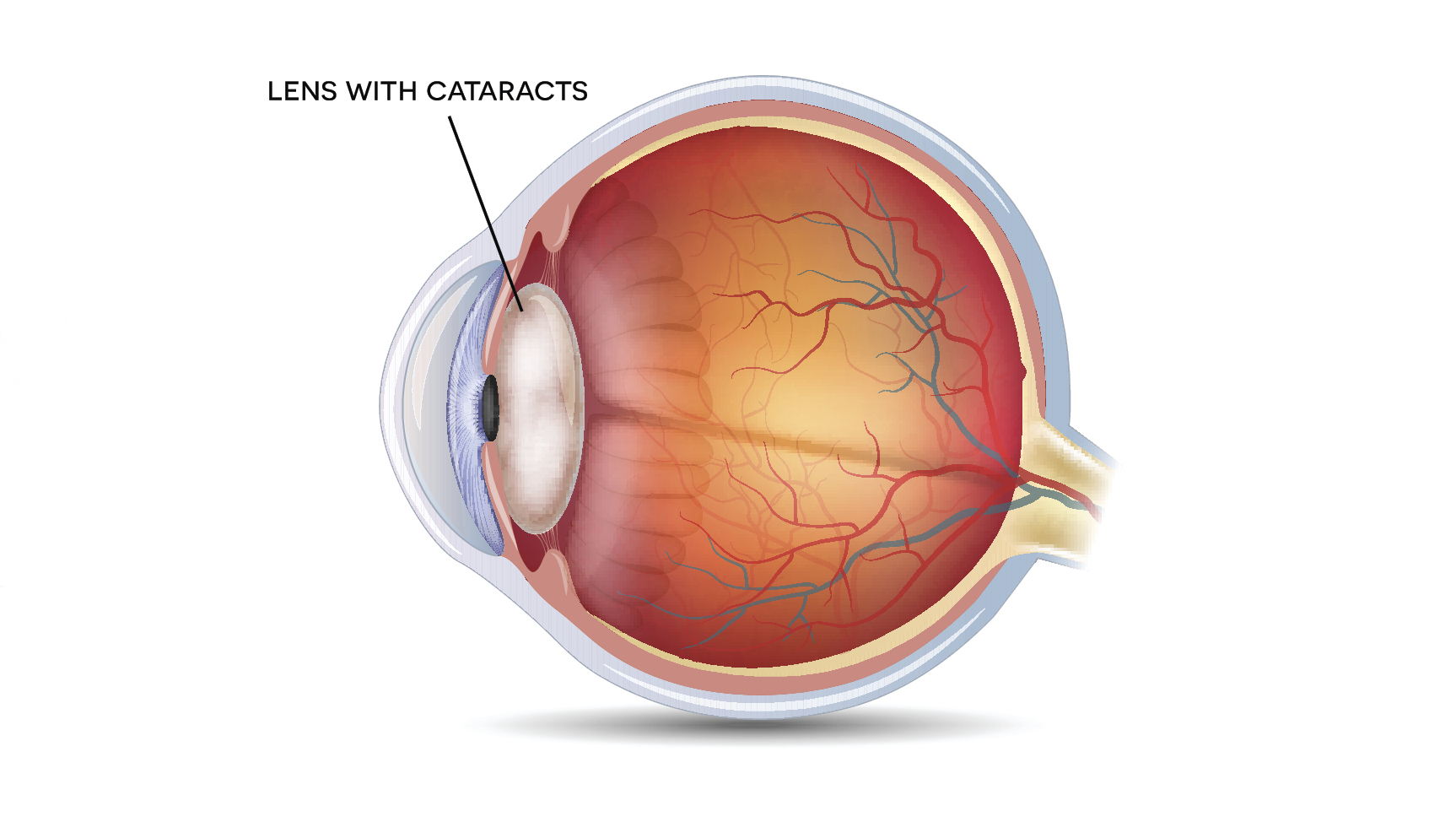CATARACTS
Cataracts occur with the natural ageing of the internal lens of the eye resulting in cloudy or hazy vision.
What are cataracts?
Like the lens of a camera, the crystalline lens of the human eye focuses light onto the retina at the back of the eye. A cataract is where the normally clear lens of the eye becomes cloudy or opaque, causing blurry or hazy vision.

Cataracts can occur as a result of age, health conditions, eye injuries or medication. Most people with cataracts benefit from treatment.
There is no need to worry if you are diagnosed as having a cataract. Cataracts are common and occur as part of the eye’s ageing process from UV damage and oxidative stress.
Different types of cataracts exist: such as cataracts resulting from health conditions such as diabetes; after eye injuries; medications (such as steroids); or congenital cataracts from birth.
Cataracts can develop slowly over many months or years. The symptoms depend on the location and severity of the cataract. You may begin to notice a “film” or “haze” causing difficulty with distance or reading vision. Your eyes may also be more sensitive to light and glare, which can make night vision difficult.
What can be done about cataracts?
Sun protection with sunglasses and a hat may help to slow down the progression of a cataract. Try to stop smoking if you are a smoker.
Updating your glasses prescription can improve vision in the early stages of cataracts. However, when stronger glasses no longer help and deteriorating vision starts to interfere with your work or lifestyle, then cataract removal surgery may be required.
Most people with cataracts will benefit from treatment. Cataract surgery is performed by an ophthalmologist (eye specialist) under local anaesthetic and involves removing the cloudy lens and replacing it with an artificial lens. Advances in cataract micro-surgery have resulted in a procedure with fast recovery times that does not require a stay in hospital.
You should have a comprehensive eye examination with your optometrist at least every two years. Your optometrist will assess your eyes and monitor for cataracts or any other eye conditions. This may include using pupil dilating eye drops to fully investigate the cataract. Regular eye examinations will help your optometrist decide when cataract surgery should be considered.